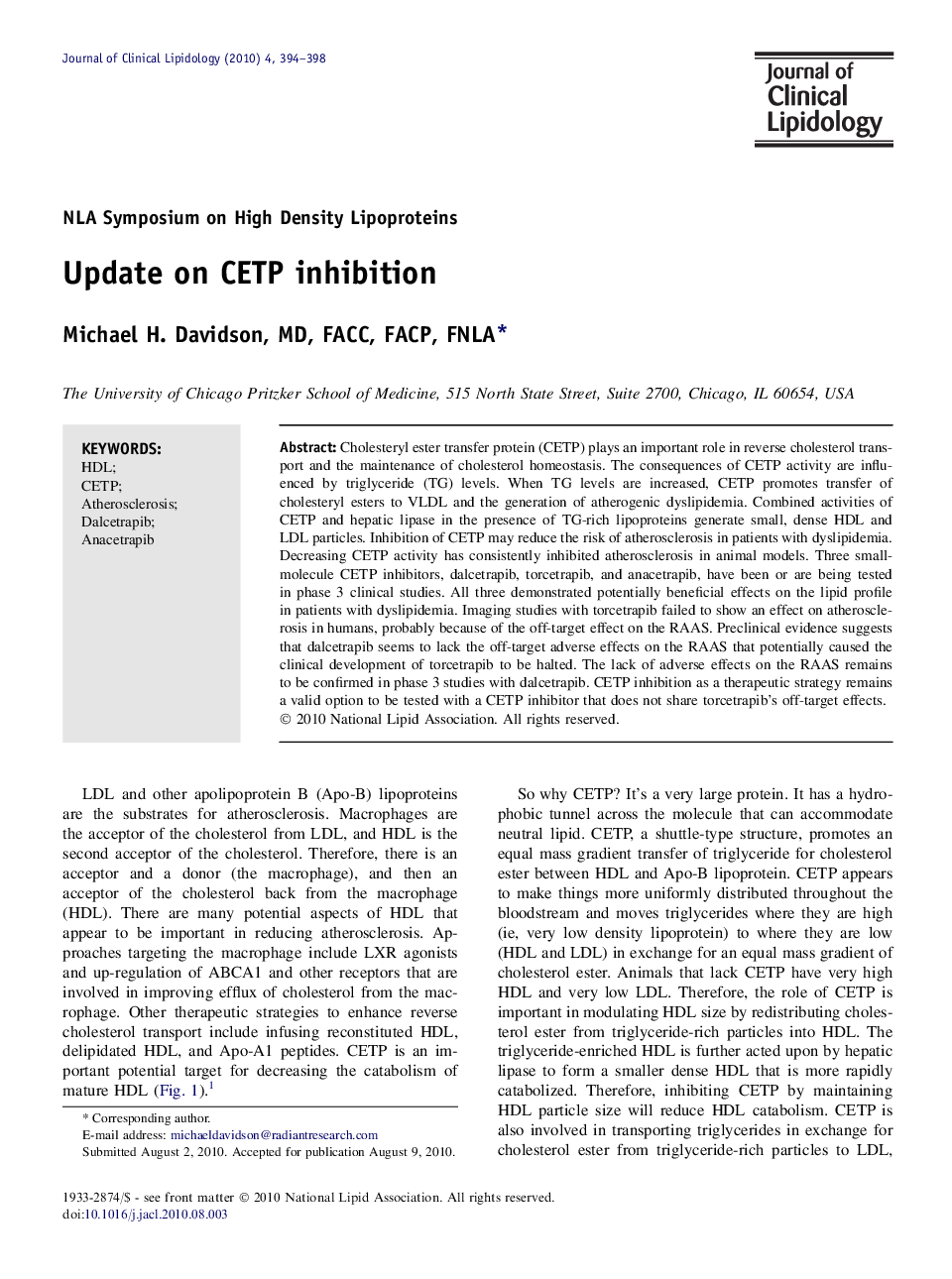| Article ID | Journal | Published Year | Pages | File Type |
|---|---|---|---|---|
| 2966325 | Journal of Clinical Lipidology | 2010 | 5 Pages |
Cholesteryl ester transfer protein (CETP) plays an important role in reverse cholesterol transport and the maintenance of cholesterol homeostasis. The consequences of CETP activity are influenced by triglyceride (TG) levels. When TG levels are increased, CETP promotes transfer of cholesteryl esters to VLDL and the generation of atherogenic dyslipidemia. Combined activities of CETP and hepatic lipase in the presence of TG-rich lipoproteins generate small, dense HDL and LDL particles. Inhibition of CETP may reduce the risk of atherosclerosis in patients with dyslipidemia. Decreasing CETP activity has consistently inhibited atherosclerosis in animal models. Three small-molecule CETP inhibitors, dalcetrapib, torcetrapib, and anacetrapib, have been or are being tested in phase 3 clinical studies. All three demonstrated potentially beneficial effects on the lipid profile in patients with dyslipidemia. Imaging studies with torcetrapib failed to show an effect on atherosclerosis in humans, probably because of the off-target effect on the RAAS. Preclinical evidence suggests that dalcetrapib seems to lack the off-target adverse effects on the RAAS that potentially caused the clinical development of torcetrapib to be halted. The lack of adverse effects on the RAAS remains to be confirmed in phase 3 studies with dalcetrapib. CETP inhibition as a therapeutic strategy remains a valid option to be tested with a CETP inhibitor that does not share torcetrapib’s off-target effects.
